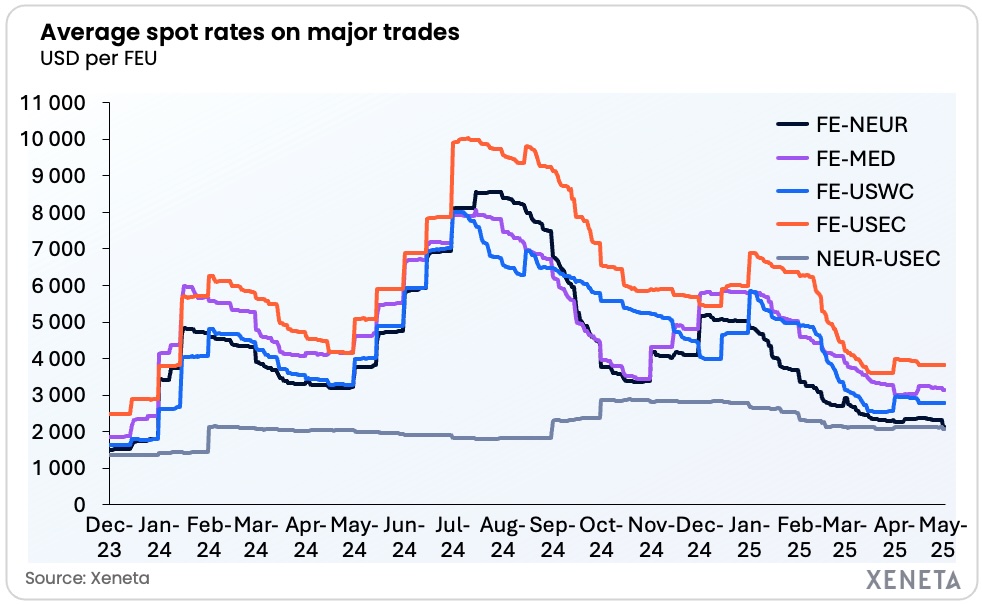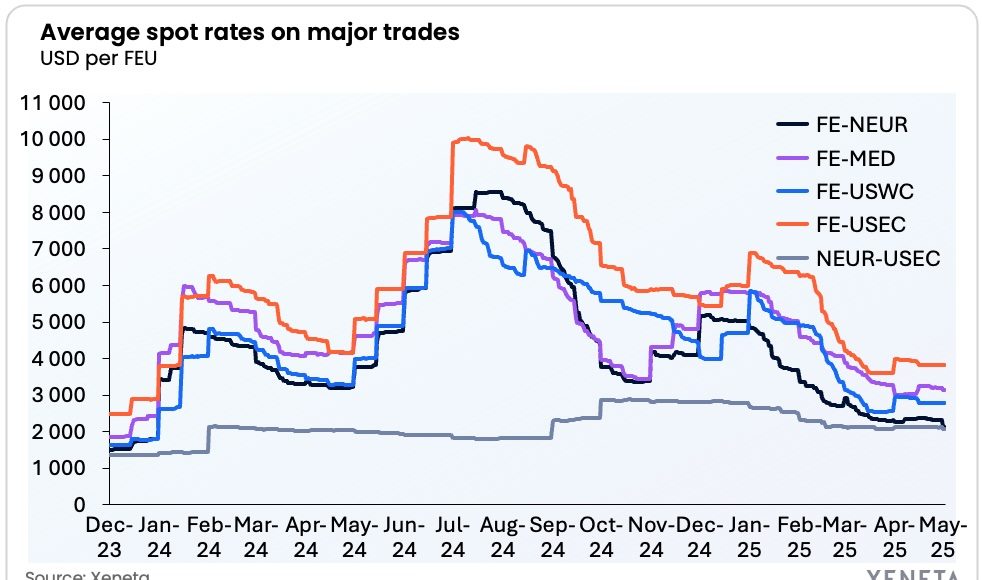(Singapore, 08.05.2025)The prospect of a largescale return of container ships to the Red Sea following the announcement of a ceasefire between the US and Houthi militia in Yemen would flood the market with shipping capacity and cause a global collapse in freight rates – but the situation remains far from certain.
Data released by Xeneta – the ocean and air freight intelligence platform – shows global TEU-mile demand would decrease 6% if container ships begin sailing through the Red Sea and Suez Canal again instead of diverting around the Cape of Good Hope.
TEU-mile demand factors the distance each 20ft equivalent container (TEU) is transported globally as well as the number transported. The 6% is based on global container shipping demand growth of 1% for full year 2025 and a largescale return of container ships to the Red Sea in H2.
Peter Sand, Xeneta Chief Analyst, said: “Of all the geo-political disruptions impacting ocean container shipping in 2025, conflict in the Red Sea continues to cast the longest shadow, so any meaningful return to the region would have massive consequences.
“Container ships returning to the Red Sea would flood the market with capacity with the inevitable outcome of collapsing freight rates. If we also see a continued slowdown in imports into the US due to tariffs, then the collapse will be even harder and even more dramatic.”
Impact on freight rates
Average spot rates from the Far East to North Europe and Mediterranean are USD 2100 per FEU (40ft container) and USD 3125 per FEU respectively. This is an increase of 39% and 68% compared to pre-Red Sea Crisis levels on 1 December 2023.
From the Far East to US East Coast and US West Coast, spot rates stand at USD 3715 per FEU and USD 2620 per FEU respectively. This is an increase of 49% and 59% compared to pre-Red Sea Crisis.
Sand said: “Carriers have capacity management strategies to keep rates elevated, such as blanking sailings when demand falls. But the amount of capacity that will flood the market following a return to the Red Sea, combined with a downturn in global container demand due to tariffs and high deliveries of new vessels, would require capacity management at an altogether different order of magnitude – or another major black swan event – to stop freight rates falling to a level that puts carriers in a loss-making position.”

A sense of reality is required
While Sand believes spot rates could collapse back to pre-Red Sea Crisis levels, he has warned the situation remains volatile and requires a sense of reality on the complexity involved in container ships returning to the Suez Canal.
He said: “The announced ceasefire plan between Israel and Hamas in February raised restrained hopes of a return of container shipping to the Red Sea but data shows no increase in transits through Bab el-Mandeb Strait or the Suez Canal during 2025.
“Carriers need assurances over long term safety of their crew and ships, let alone customers’ cargo. Perhaps even more importantly, so do insurance companies.
“We also know Houthi militia will continue to attack some ships because they stated very clearly the ceasefire agreement is with the US and does not include Israel.
“Introducing diversions around the Cape of Good Hope in early 2024 caused massive disruption to global maritime supply chains. Carriers and shippers do not want to go through the disruption of restoring schedules to the Suez Canal only for the situation to deteriorate – sending them back to square one and having to re-introduce diversions around the Cape of Good Hope.”





































